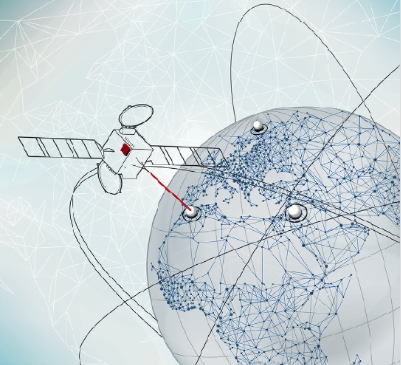

Space-to-ground transmission through BridgeSat’s optical communications network provides large amounts of data delivery for satellite operators. Image is courtesy of BridgeSat.
An agreement has been reached in which BridgeSat will provide space laser terminals and data services to ICEYE, the first commercial microsatellite synthetic-aperture radar (SAR) constellation. BridgeSat’s low-cost terminals and associated ground services give businesses and government agencies a faster, less expensive alternative to traditional radio frequency (RF) solutions for Low Earth Orbit (LEO) and Geostationary Earth Orbit (GEO) applications.

ICEYE provides turnkey data delivery and analytics services for commercial and government applications worldwide, including global disaster response, agricultural management, city planning, maritime port traffic management and forest management. It’s the first organization in the world to successfully deploy SAR satellites with a launch mass under 100 kg.
BridgeSat will provide ICEYE its Compact Laser Comms Terminals (CLCT), which provide up to 10 Gbps LEO downlinks in a compact form factor that weighs less than 2 kg. BridgeSat will also provide ground services through BridgeSat’s free-space optical network.
Barry Matsumori, BridgeSat CEO said that pioneers seek out other pioneers to change the world. They’re the first to commercialize laser-based free space optical communication and associated ground services, which are an ideal match for ICEYE, the world’s first commercial microsatellite synthetic aperture radar constellation.
Rafal Modrzewski, ICEYE CEO added that by leveraging next-gen satellite technology, ICEYE is giving commercial and government users affordable new options for making informed decisions. BridgeSat’s compact, low-cost, high-speed space laser communicaitons terminals and ground services are key for achieving their goal of democratizing access to Earth observation data.

